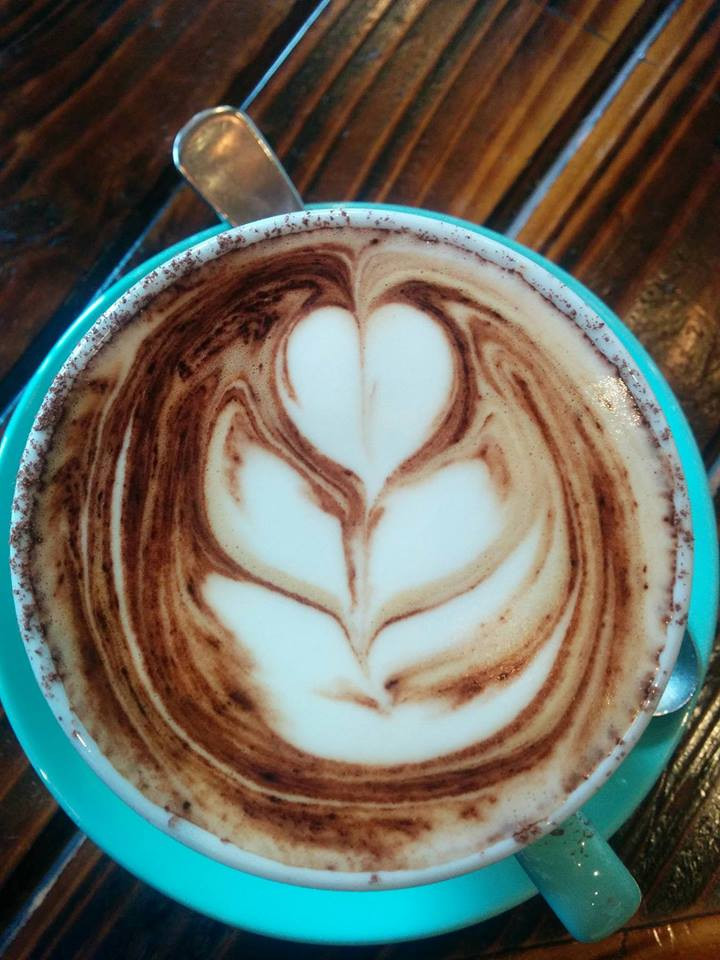We were listening to the grinding, banging, humming and whistling sounds from espresso machines as we waited for our coffees. I was wondering about what I was going to write for my next blog post. He was thinking about whether he made a good impression on his wife’s boss, who we just ran into. When the conversation turned to flat whites…. And not the kind of flat (breasted) whites you see walking the cat walk, modelling clothes in Western countries.
In Australia, for instance, people drink flat whites coffees. Flat whites are an espresso based coffee made by pouring steamed milk over a shot of espresso. They take staged Instagram photos of flat whites, we make shapes out of foamed milk and call it “coffee art”, and an unofficial anthem is the grinding, banging, humming and whistling sounds from espresso machines.
So they take the taste and look of our coffee seriously. But generally don’t know that coffee comes from fruit. They don’t know that farmers have to harvest during the wet season or that they have to carry heavy loads uphill to wet mills. And when they take the first sip of a coffee to alleviate their hard morning in the office, they don’t think about how coffee farmers are among the worst-treated in the world.
Say “coffee cherry” to someone in the street, and they will give you confused looks while they sip their coffee. It’s no wonder that they end up trusting Fair Trade standards. The label quickly tells us that there’s at least a higher chance that farmers are receiving a fairer cut of the profits. Though, the limits of fair trade are well-documented. And farmer involvement in setting Fair Trade standards
But not all is good in the coffee supply chain. An average price for a flat white is $AU 4.70 ($US 3.57) , which is around 358 KES, but farmers get less than a dollar for an entire kilo of cherries. Because the best coffee beans are grown in places like Africa and Latin America, the EU has strategically maintained tariffs on roasted coffee, which now sits at around a 7.5% tax. Calestous Juma, from Harvard University, found that Africa made just under £1.6 billion from coffee exports in 2014 while Germany made £2.6 billion from exporting the drink, even though Germany doesn’t actually grow coffee itself.
So clearly, something is going wrong. Those who do the hardest physical work (growing the beans) are getting paid the least, and those who add the finishing touches are getting paid the most.
Corporate concentration in coffee supply chains is one of the biggest drivers- as corporate processors like millers invest in other areas along the chain such as in marketing and distribution. You end up with a supply chain that is hour glass shaped- millions of farmers on one end, a few middle men, and the mass of consumers.
We need to thicken out the middle.
One of the ways to do this is to develop more direct and transparent supply chains where farmers are aware of the quality grade of their coffee, the costs of processing and transport, and the going price for the finished cup of coffee. “Direct trade” is a trend that has come up in speciality coffee shops in Australia and around the world. It involves micro-roasters/artisan coffee roasters/ craft roasters buying green cherries from the farmers themselves and with a focus on quality and taste. Over the last decade, micro-coffee roasters such as these guys, or these and this group have created more direct trade models that reduce middle men and provide more transparency for all actors.
For instance, Union Hand-Roasted Coffee focuses on high-quality, speciality coffee and begins by negotiating the price with the farmer or the representative of the farmer cooperative. The other costs (exporters/importers) are negotiated separately. They pay around US $1.75/lb to USD $20/lb depending on the processes a farmer had to undertaken to ensure quality (e.g. picking ripe cherries).
What isn’t said in the rave reports about direct trade in coffee is that, like all global supply chains, direct trade is only relatively direct. For example, Union Coffee select exporters based on their ability to provide complete price transparency to producers, and their employees audit the exporters being used to ensure this is happening. So, coffee supply chains still depend on “middle men” such as exporters and customs support, and it may also require on-the-ground contractors that can connect buyers with farmers and cooperatives. But micro-roasters do illustrate one way to ‘thicken out the middle’ and shows how consumer demands for high quality coffee for their flat whites can work for farmers.

